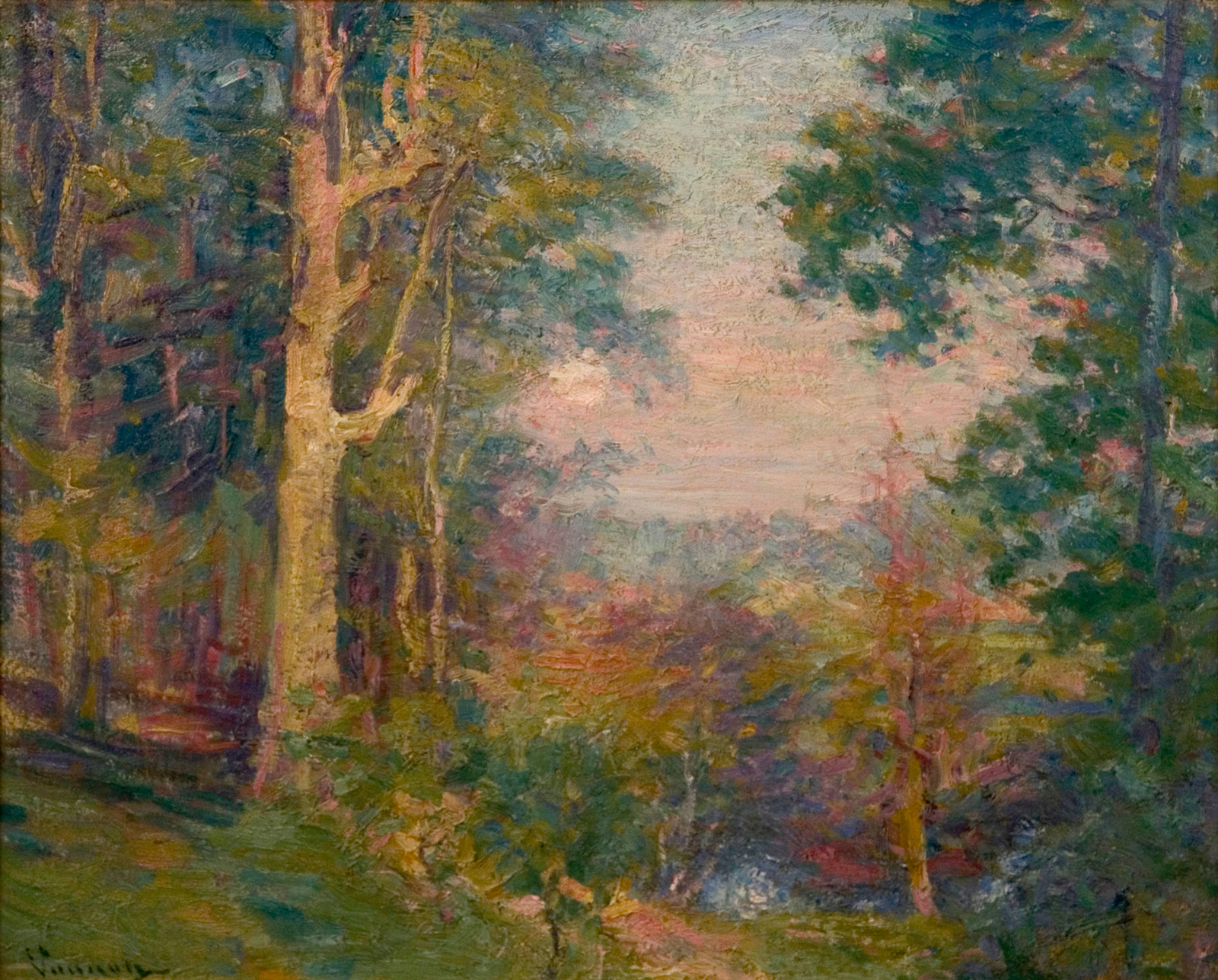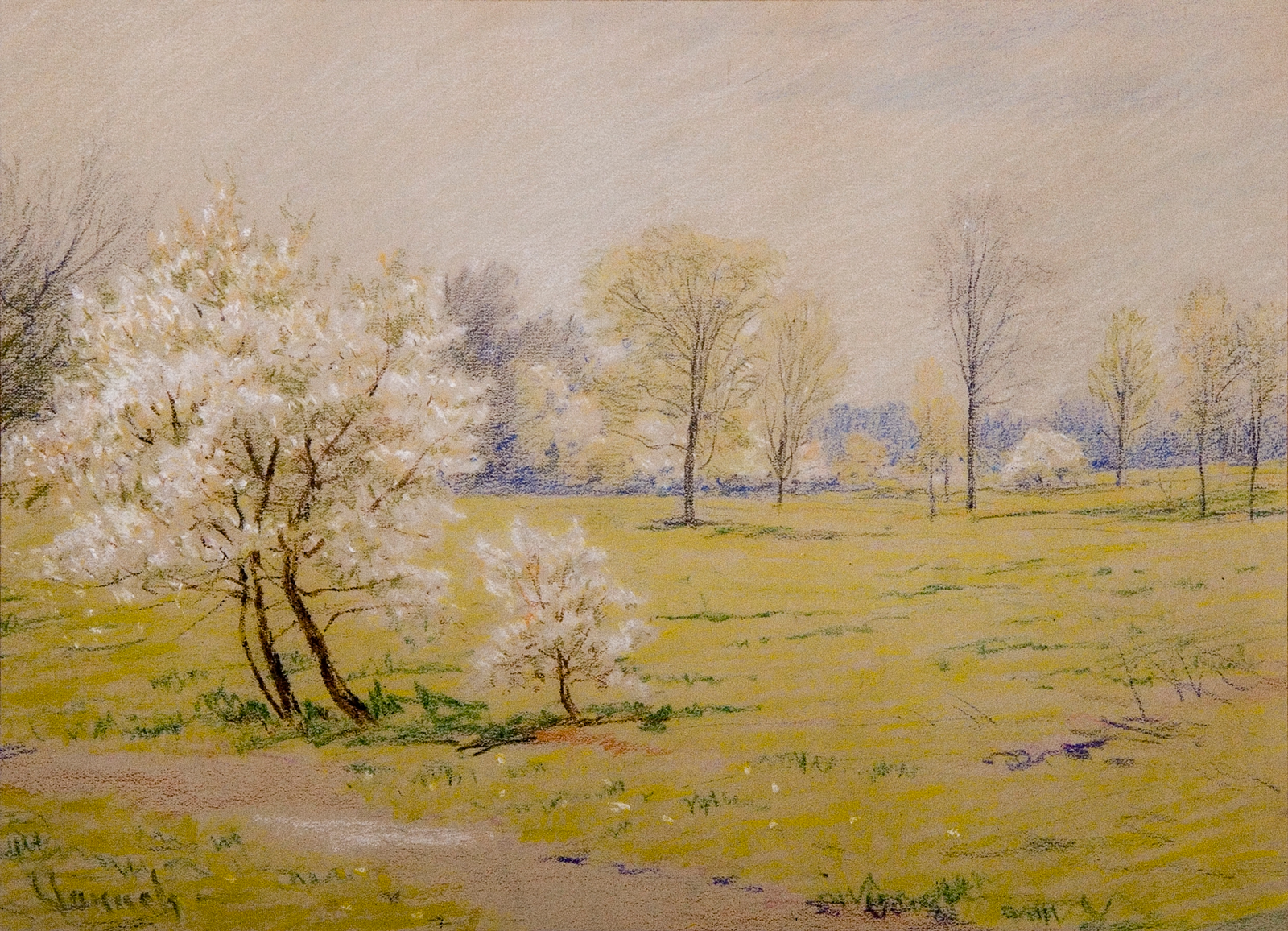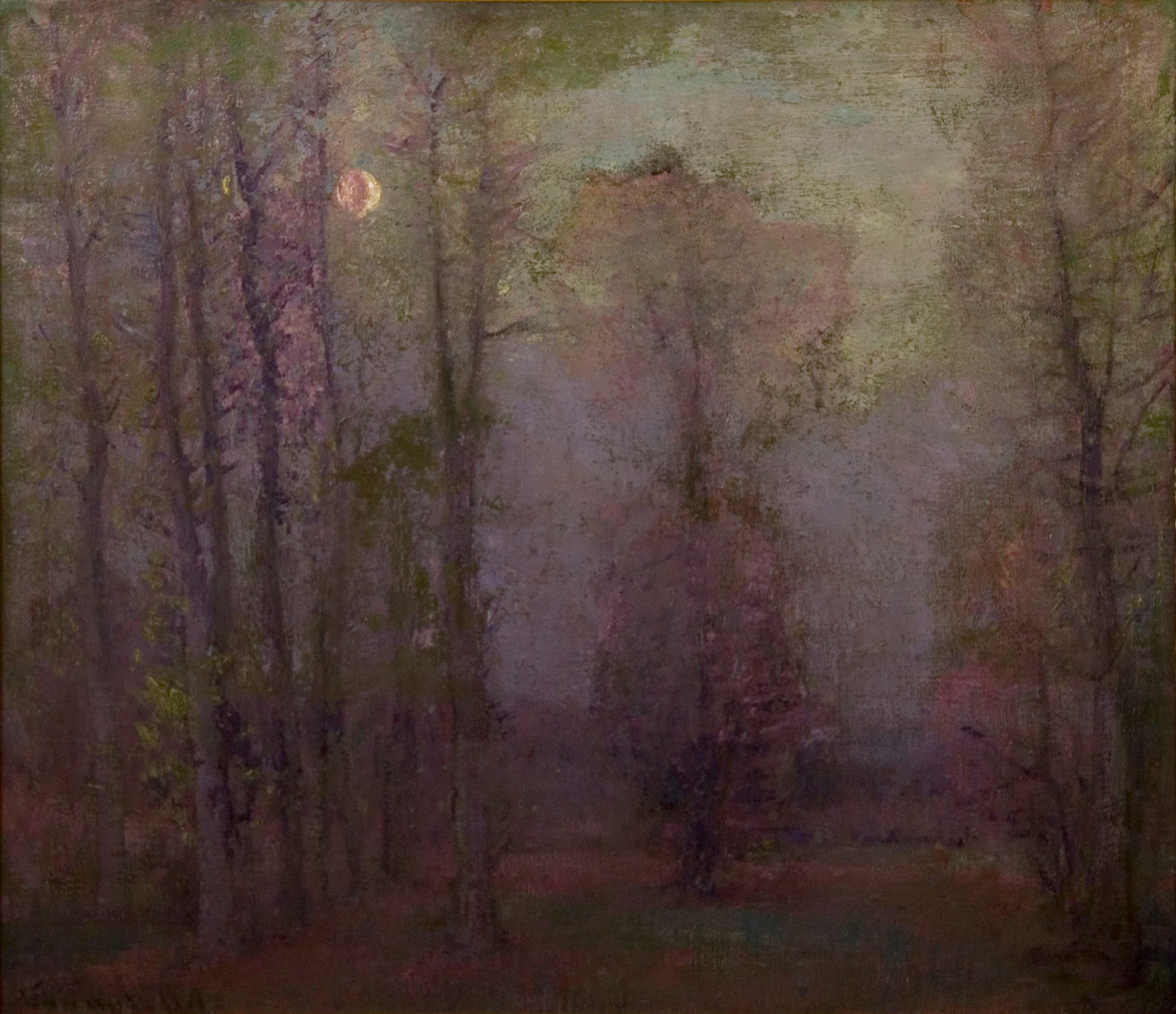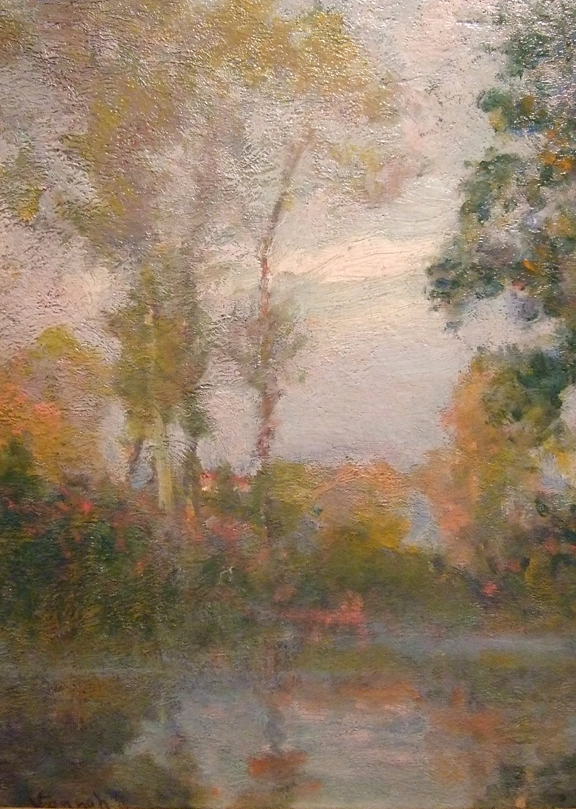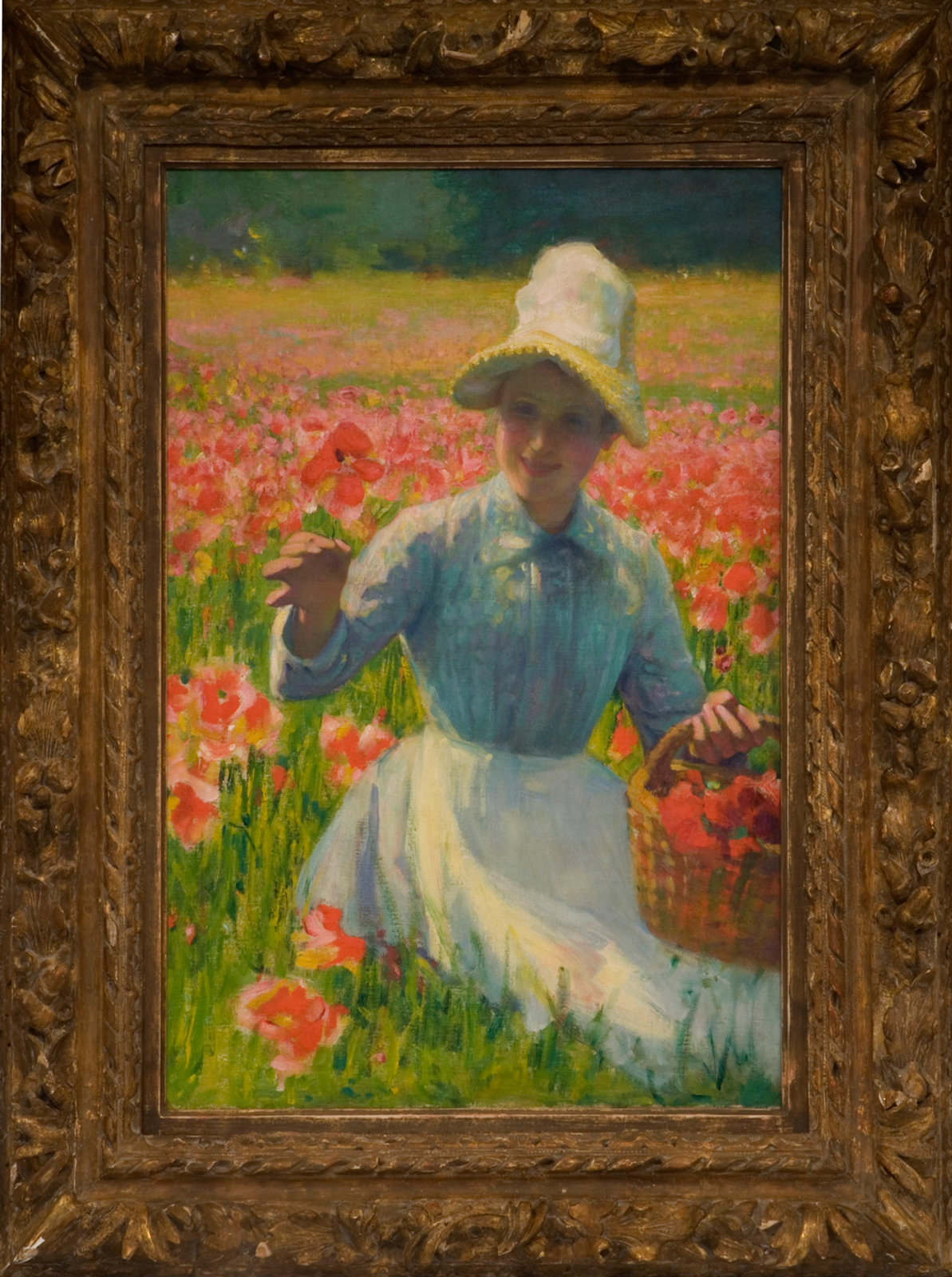Robert Vonnoh
Robert Vonnoh in studio c. 1890. Image from Archives of American Art, Bessie Potter Vonnoh papers.
Robert Vonnoh (1858-1933) was a key figure in the first generation of American Impressionists, a portraitist and landscape painter known for both radical experimentations in color, as in his famed poppy series, along with more muted, dreamlike work later works. Raised just outside of Boston, Vonnoh studied first at the Massachusetts Normal Art School and then, beginning in 1881, at the Académie Julian in Paris, where he appeared poised to begin a career as a portrait painter. A visit to a French Impressionist exhibit upon his return to Boston followed by a trip back to France in 1887, this time to the artists’ colony of Grez-sur-Loing, however, set his artistic practice on a different path. In Grez, Vonnoh developed his signature pictorial style of a groundbreaking use of unblended (or “broken”) brush strokes and heightened (verging even on Post-Impressionistic) color, which he combined with a more conservative overall canvas composition.
When Vonnoh came back to the United States in 1891, he taught briefly at the Pennsylvania Academy of Fine Arts (his students included Ashcan school artists Robert Henri, John Sloan, and William Glackens) and in 1893 exhibited 13 paintings at the World’s Colombian Exposition in Chicago, where he met his future spouse sculptor Bessie Potter. After several years painting portraits of Chicagoans, Robert and Bessie moved to New York City and split their time between New York, France, and, starting in 1905, the Old Lyme artists’ colony in Connecticut. Vonnoh’s later landscapes of twilight and evening scenes at Lyme are dominated by blue and lavender; they have a dissolving, almost abstract quality, echoing the late water lilies and rivers of Claude Monet, a lifelong inspiration for his work.
For more about Vonnoh, check out Robert Vonnoh: American Impressionist by Wendy Greenhouse, PhD, in Madron’s online store.
Available Artworks

